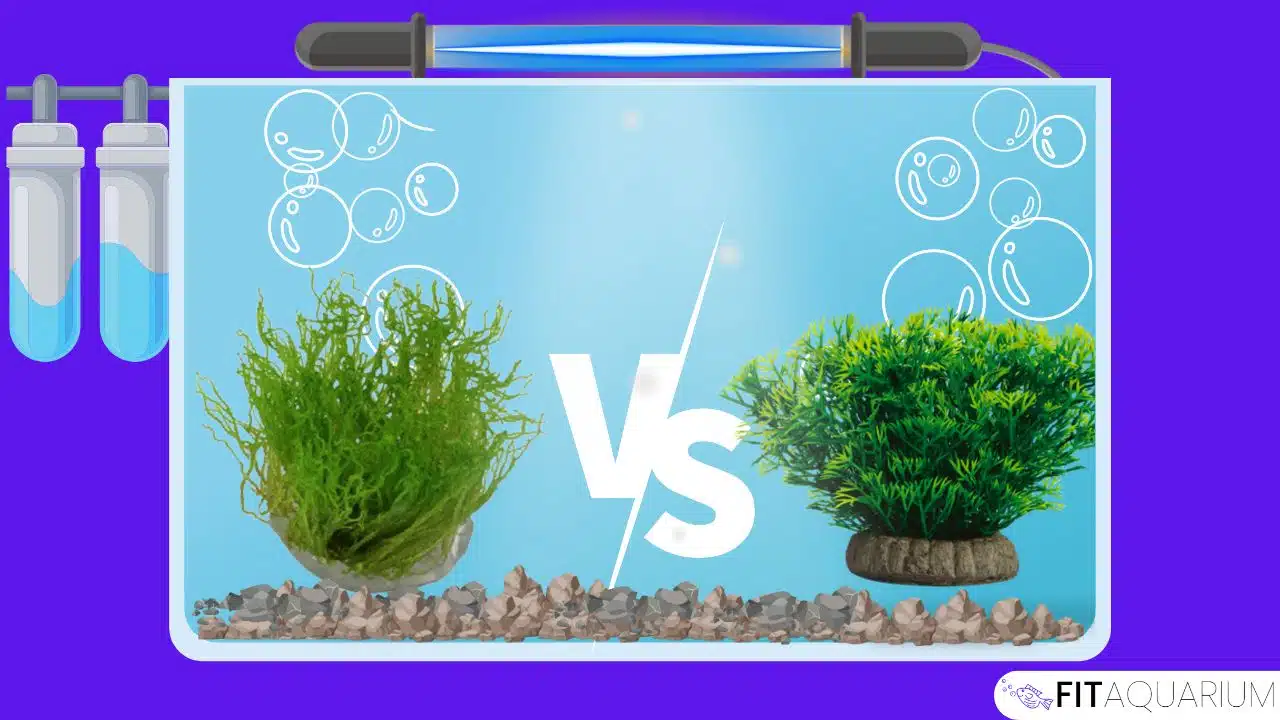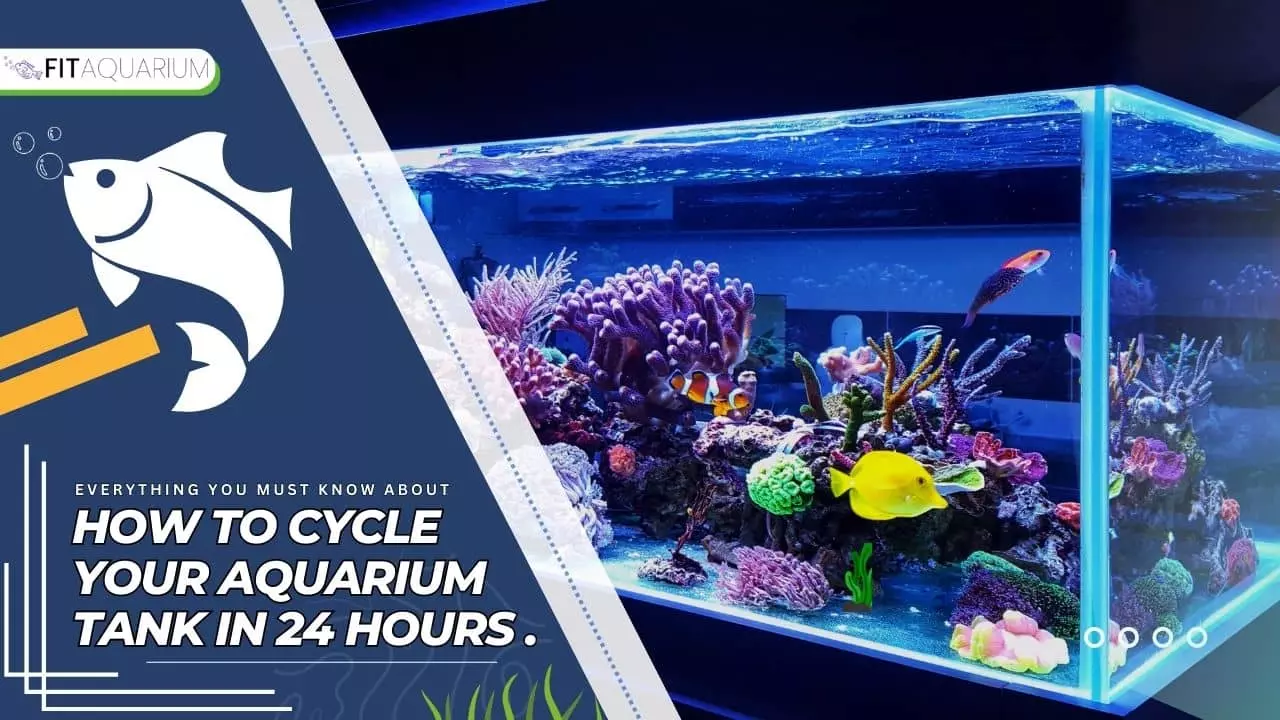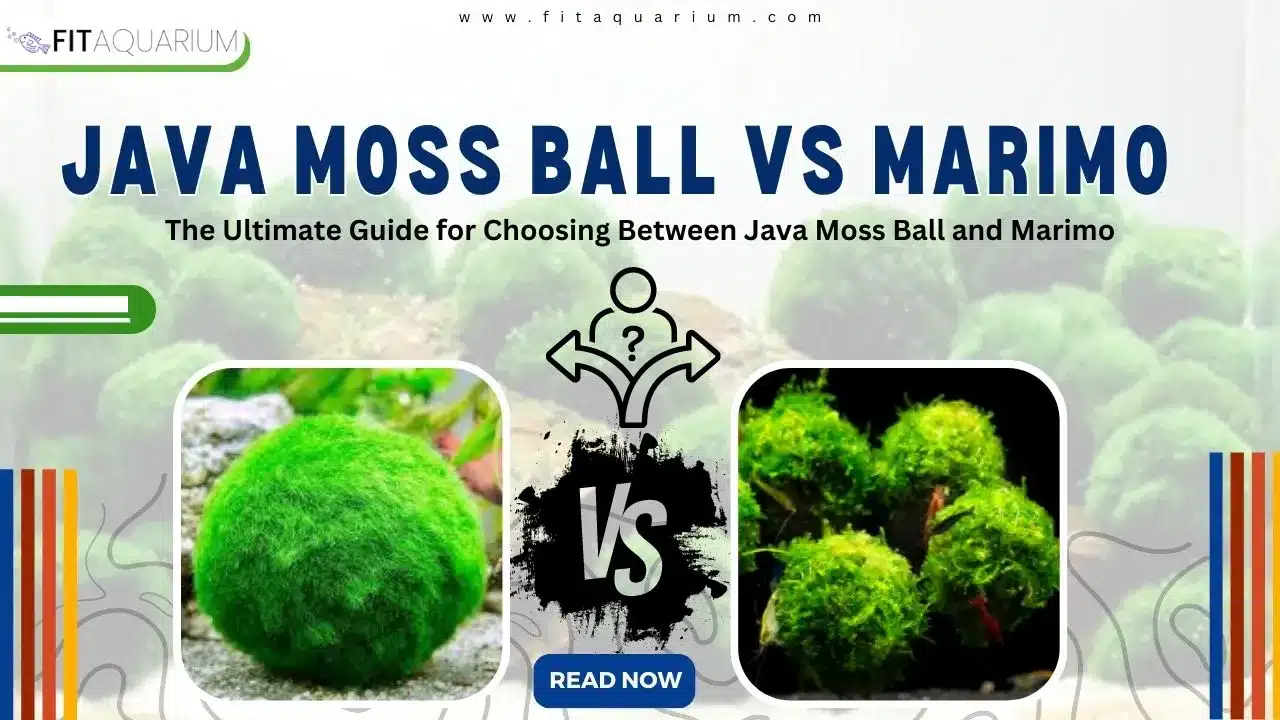Is your Java moss losing its lush green hue and turning an unsightly brown? Don’t worry, you’re not alone. This common issue can be caused by various factors, such as inadequate lighting, nutrient deficiencies, or poor water quality.
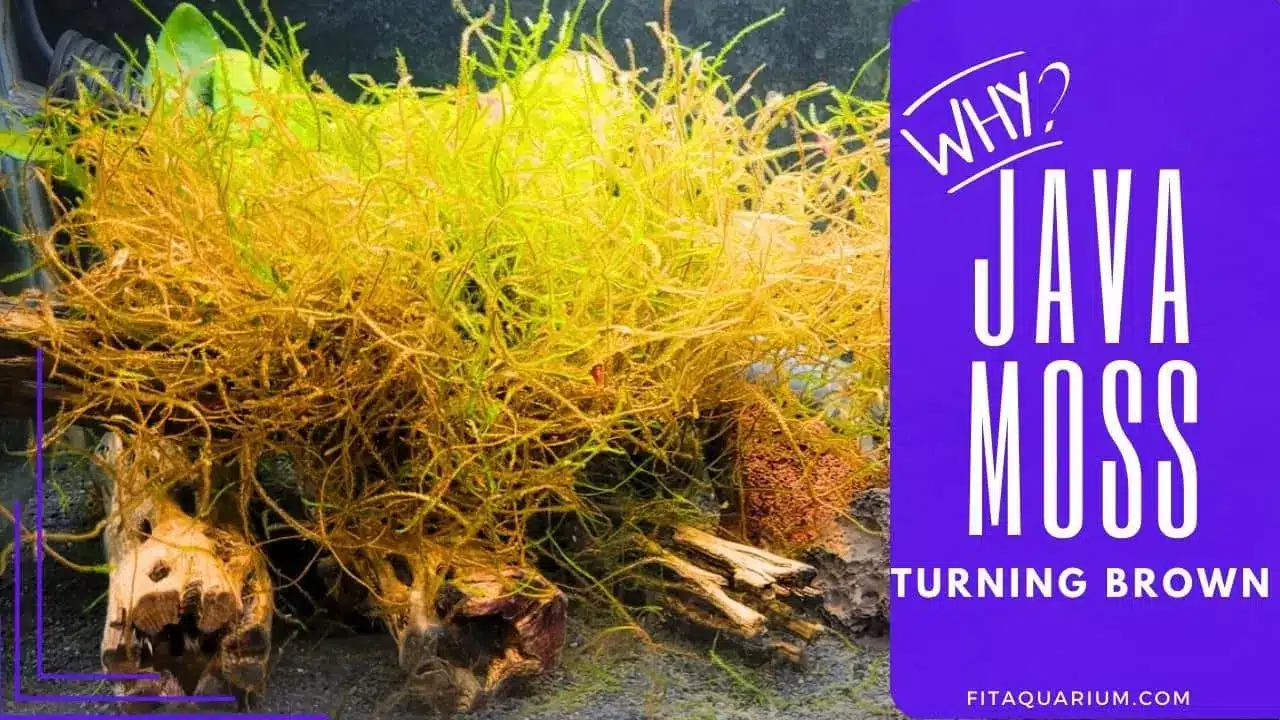
As an aquarium enthusiast, I’ve encountered this problem firsthand. But fear not! I’ve successfully navigated through the challenges of revitalizing brown Java moss, and I’m here to share my knowledge and experience with you.
Without further ado, let’s dive into uncovering the root causes and effective solutions for your Java moss turning brown.
Table of Contents
Causes of Brown Java Moss
Java moss turns brown is a common issue among aquarium enthusiasts, and other aquatic vegetation too, and it can be caused by several factors. These factors include inadequate aquarium light, poor water quality, lack of nutrients, and excessive handling or disturbance of the plant.
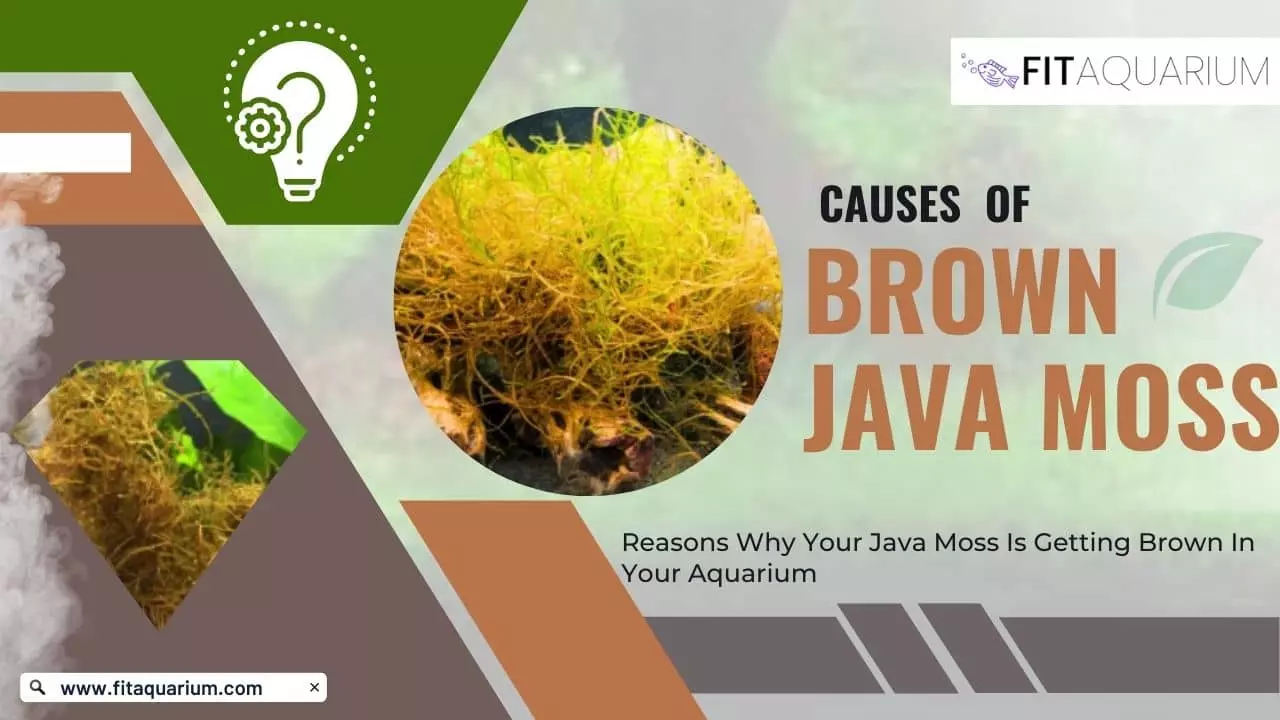
It is essential to identify the root cause of the browning to take the appropriate measures to remove algae, revive java moss, and ensure that it thrives in your fish aquarium.
1. Poor Water Quality:
Poor water quality, including a lack of adequate levels of oxygen, is one of the causes of Java Moss turning brown.
The aquarium mosses (whether it is java moss, willow moss, or flame moss) or floating plants may start to decay and form brown patches when there is not enough oxygen in the water. This can happen in fish tanks and other aquarium plants that are overcrowded or where there is excessive sunlight and not enough water circulation.
Poor water quality can enhance algae and also lead to the growth of harmful bacteria, which can affect the health of the Java Moss.
It is important to maintain a clean and healthy fish tank environment with adequate oxygenation to make Java Moss green from turning brown as well as other aquatic plants like Christmas Moss.
2. Inadequate Nutrients:
Insufficient nutrient absorption can also be a cause of the thick leaves of the Java Moss plant turning brown. Like all plants, the Java Moss plant requires a certain amount of nutrients to grow properly and provide maximum benefits to your tank, and if these nutrients are lacking, the thick leaves of the plant may start to turn a brown color.
This may occur if the tank’s water is not filtered correctly or if there is insufficient organic material to promote the dense growth of the Java Moss.
To address this issue, you may need to adjust your fish tank water parameters or add a nutrient supplement to the poor fish tank maintenance yourself.
One effective solution is using Seachem Flourish, a nutrient supplement designed to promote vibrant growth in aquarium plants. In my case, just a single bottle of Seachem Flourish worked wonders for my tank.
3. High Temperatures:
Although Java moss is more temperature tolerant than Christmas moss, yet high temperatures can also be a cause of the Java moss dying or turning brown. The plant may experience stress and cell damage if the temperature in the fish aquarium or tank is too high.
This can result in the browning of the plant, as well as slower growth and reduced vitality. It’s important to maintain an appropriate temperature range for Java Moss expansion, typically between 20-28°C (68-82°F), to prevent this issue.
4. Overcrowding:
Overcrowding can also reduce adequate carbon dioxide levels and nutrient absorption and cause Java moss to turn brown. When there are too many plants or fish in a small tank, the available nutrients and oxygen in the water become depleted more quickly, with low carbon dioxide levels leading to poor water quality.
This can stress the Java moss and cause it to turn brown. Additionally, overcrowding by other plants can result in physical damage to the plant, as fish or other creatures may nibble on or uproot the moss.
5. Algae Growth:
Algae infestation is another common cause of aquarium moss turning brown. The growth of algae can take up space and block light from reaching the Java moss, leading to decreased photosynthesis and eventually, browning.
In addition, algal growth in the presence of dead Java moss is harmful, and too many algae can create competition for nutrients, causing the brown moss to receive fewer necessary nutrients for growth.
It is important to maintain proper water parameters and avoid overfeeding to prevent excessive algae growth that helps Java moss turn green back. Algae can be removed from dirty water manually or through the use of algae-eating organisms such as snails or shrimp.
Solutions to make brown Java Moss Green back

Revitalize your Java moss back to turn green again with these effective solutions to prevent and treat brown discoloration. Learn how to optimize water quality, absorb nutrients, reduce nutrient absorption, adjust lighting, and combat algae infestations to keep your Java moss from turning brown and maintain its health and vibrancy.
1. Improving Light:
Improve the health and appearance of your Java moss by optimizing its lighting! Learn about the importance of proper lighting and how to provide your moss with the ideal conditions to prevent browning and encourage lush growth.
Providing Adequate Light:
Providing adequate light is one of the key solutions to prevent Java moss from turning brown. Inadequate light can slow down photosynthesis, which can lead to the death of the moss and cause it to turn brown.
Reducing Light Intensity:
Reducing light intensity is another solution for preventing Java moss from turning brown. If the light is too intense, it can cause the moss to undergo excessive photosynthesis, which can lead to browning.
One way to reduce light intensity is by using a light dimmer or by placing the tank farther away from a light source. It is important to note that reducing light intensity should be done gradually to prevent any shock to the plant.
2. Providing Nutrient Supplements:
Discover how providing nutrient supplements can help revive your brown Java Moss. Learn about the most essential minerals and nutrients your moss really needs to thrive and the best ways to provide them for optimal growth and vibrant color.
Liquid Fertilizers:
Liquid fertilizer is a nutrient-rich solution that is added to water to provide essential nutrients to aquatic plants, including Java and other aquarium mosses. It is an effective way for fish aquariums to supplement and absorb nutrients from the natural nutrients present in the water to produce food for the aquatic plants and aquarium moss, especially in aquariums with low nutrient levels.
Adding liquid fertilizer can help improve the overall health and growth of Java moss and prevent it from turning brown java moss due to its nutrient absorption deficiencies.
I used Seachem Flourish for this purpose and I was astonished by the results. Not only did it restore the vibrant green color of my dying moss, but it also effectively eliminated my algae issues.
Solid Fertilizers:
Solid fertilizers from other plants, such as root tabs or substrate fertilizers, can also be effective in providing nutrients to Java moss. These are placed in the substrate at the base of the plant, where they slowly dissolve and release nutrients over time.
Solid fertilizers can be especially useful in aquariums with rooted plants or those with a nutrient-poor substrate. It is important to choose a fertilizer that is specifically designed for aquarium use and to follow the manufacturer’s instructions for dosage and application. Over-fertilization can lead to algae growth and other issues.
3. Reducing Water Temperature:
Reducing water temperature can be a crucial step in preventing Java moss from turning brown. This can be achieved by using water flow through a number of methods such as using a chiller, lowering room temperature, using a fan to increase evaporation, or adding ice packs or carbon dioxide to the water column.
In this way, the ideal temperature range can be maintained, allowing the Java moss to absorb sufficient nutrients to thrive, tolerate temperatures and maintain its vibrant green color.
4. Controlling Overcrowding:
Controlling overcrowding is an essential factor to consider when keeping aquatic plants healthy, including Java moss. Overcrowding can cause a lack of oxygen and nutrients, leading to poor growth and even death. It can also create a breeding ground for harmful bacteria and algae, which can cause the moss to turn brown. Proper spacing and regular maintenance can help prevent overcrowding and ensure optimal conditions for Java moss growth.
5. Treating Algae Infestation:
Learn about the causes and solutions for brown Java Moss dying due to algae infestation. Explore tips for controlling and treating algae development to promote healthy Java Moss growth in your aquarium or tank.
Manual Removal of algae:
Manual removal is a common method for treating algae infestations in aquatic environments. This involves physically removing the algae from the affected area by scrubbing or scraping it off surfaces or using a net to scoop it up. While effective, manual removal may not be practical for large infestations or hard-to-reach areas, and it may not address the underlying causes of algae development.
Chemical Treatments for algae removal:
Chemical treatments can be effective in controlling algae infestations, but they should be used with caution. It is important to choose a product that is safe for aquatic life and to follow the instructions carefully.
You may consider employing hydrogen peroxide as a method to combat algae growth in your aquarium. Widely recognized in the fishkeeping hobby, hydrogen peroxide can be effective in removing algae.
Overuse or misuse of chemicals can harm not only the algae but also other plants and fish in the tank. It is generally recommended to try other methods, such as manual removal or reducing nutrient levels, before turning to chemical treatments.
Preventive Tips To Avoid Java Moss Turning Brown:
Looking to keep your Java Moss healthy and thriving? Moving on, we will discuss the necessary maintenance and care to ensure optimal growth, including proper lighting, temperature, and nutrient levels.
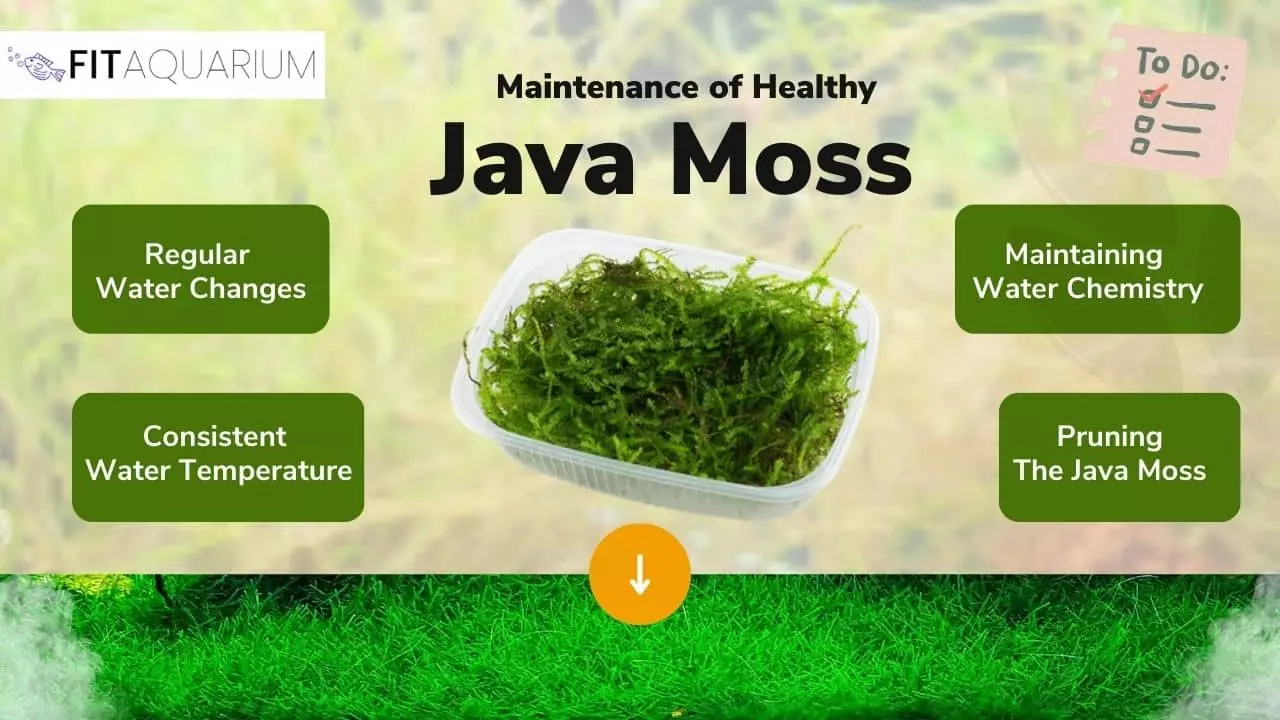
We discover tips and tricks for preventing common problems with Java moss, such as browning and yellowing, and how to keep your Java Moss looking lush and green.
1. Regular Water Changes:
Regular water changes are an essential part of maintaining a healthy Java moss environment. They help to remove excess nutrients and waste products from the water, which can lead to the growth of harmful bacteria and algae blooms.
By changing the water on a regular basis, you can ensure that your Java moss has access to clean, oxygen-rich water, which is essential for the healthy growth of green Java moss. It is recommended to change at least 20-30% of the water in your aquarium every week to avoid dying java moss.
2. Proper Water Chemistry:
Proper water chemistry is essential for the healthy growth of the Java moss plant. Inconsistent water parameters, such as pH and hardness, and insufficient carbon dioxide, can cause stress to the Java moss plant and result in browning. Maintaining the ideal water parameters for the Java moss plant can prevent this problem and promote healthy growth.
Regular water testing and adjustment to carbon dioxide can help to ensure that the water chemistry is within the appropriate range for the Java moss plant’s needs.
3. Consistent Water Temperature:
Maintaining a consistent water temperature can also help in maintaining the health of Java moss plants and other plants without too much fertilizer. Fluctuations in temperature can cause stress to the plant and lead to brown or yellowing leaves.
It is recommended to keep the water condition between 68-82°F (20-28°C) for optimal growth of the Java moss plant. Using a heater with a thermostat can help maintain a consistent temperature.
4. Pruning:
Pruning or trimming is an essential task to keep your Java moss healthy and prevent it from overgrowing and causing problems in your aquarium. Moreover, dead java moss is harmful to other aquatic species.
Trimming java moss helps to control the shape and size of the moss, removing any dead or dying portions of the plant, and maintaining its overall health. With proper pruning, you can ensure that your Java moss remains an attractive and valuable addition to your aquarium ecosystem.
5. Cleaning:
Cleaning is an essential part of maintaining a healthy aquarium and promoting Java moss development. Over time, debris, dead plant leaves, leftover fish food, and waste can accumulate in the fish tank itself, leading to poor water quality and hindering plant growth.
Regular cleaning of the fish tank itself and equipment can prevent this buildup and promote optimal conditions for Java moss. This includes cleaning the fish tank walls, gravel, and any decorations, as well as regular maintenance of the filter and other equipment.
This could be achieved by specialized cleaning equipment. By keeping the whole fish tank clean, you can help prevent issues such as algae growth, which can compete with Java moss for nutrients and hinder its growth.
Conclusion:
In conclusion, Java moss is a popular and hardy aquatic plant that can thrive in a variety of conditions. However, it is important to understand and address any issues that may arise to ensure its continued growth and health.
Java moss turning brown can be caused by poor water quality, high temperatures, overcrowding, and algae infestation, among other factors. To address these issues, measures such as reducing water temperature, controlling overcrowding, and treating algae infestation through manual removal or chemical treatments may be necessary.
In addition, maintaining healthy and vibrant Java moss requires regular water changes, proper water chemistry, consistent water temperature, pruning, and cleaning.
By implementing these strategies, Java moss can continue to thrive and enhance the beauty and health of your aquatic environment.
Frequently Asked Questions:
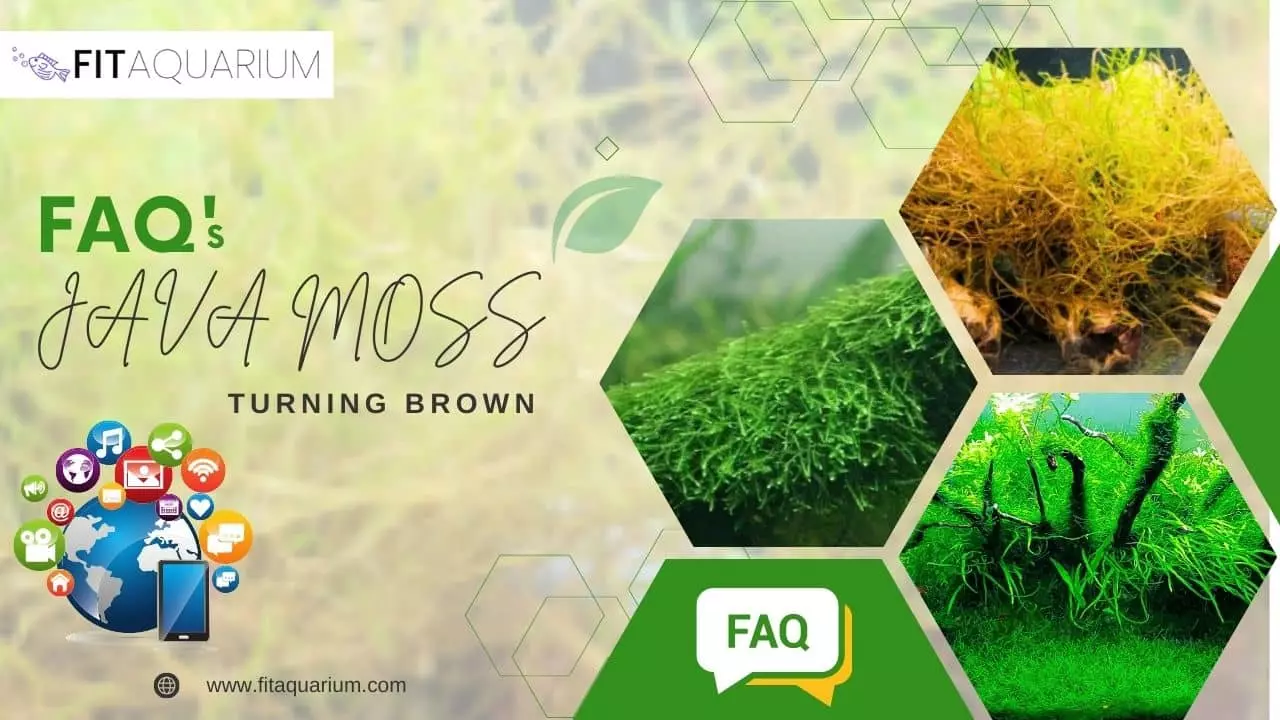
-
Why is my moss turning brown?
Your moss may be turning brown due to several factors such as inadequate lighting, nutrient deficiency, or poor water quality. These conditions can hinder the moss’s growth and cause it to change its color.
-
How do I keep my java moss healthy?
You can keep your java moss healthy with a little care. Just make sure you are providing adequate lighting, maintaining water quality, providing proper water circulation in your tank, adding nutrients, avoiding overcrowding, and trimming it regularly. These tips help your java moss to stay healthy and look lush green.
-
Can you make brown moss green again?
Yes, brown moss can be re-greened. Moss browning is caused mostly by insufficient nutrient absorption, abundant algae, and high carbon levels. You can restore its green color by using the procedures outlined below.
I. Lowering the amount of fertilizer in the tank
II. preventing algae growth
III. raising CO2 levels
It can thrive again once the conditions are suitable.


